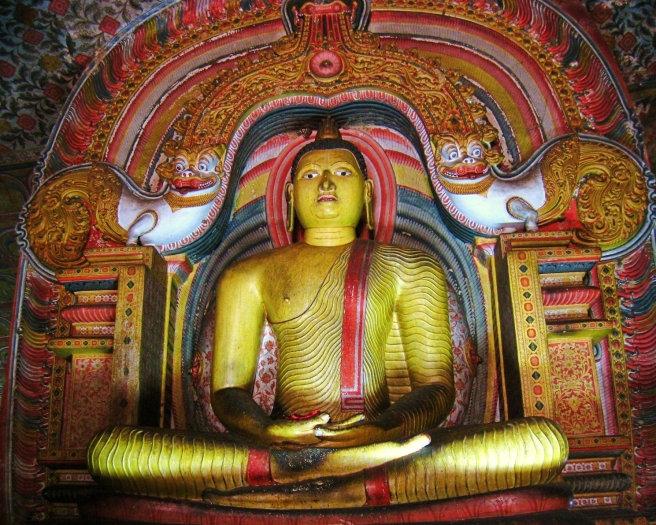There is a verse in the Mahayana Uttaratantra (Ratnagotravibhaga) which can be used as a reminder in meditation:
“Here there is nothing to remove and nothing to add,
the one who sees the truth of being, by seeing the truth is liberated”,
or
“Here, there is nothing to remove and nothing to add,
seeing truly, true seeing is liberation” *
It is a useful reminder of how we can let awareness become aware of itself, without interference. Well, so to speak, since obviously Awareness is intrinsically reflexively self-aware, what else could be aware of awareness? But how do we not imprison ourselves in the lookout tower of thinking, and simply Be what we Are?
ordinary mind
You could call what we’re interested in “ordinary mind” – not something created specially for an enjoyable state, but what we always inevitably are. We don’t want to be distracted by transient phenomena from coming to know our always-mind, our true nature.
“All phenomena are emanations of mind… ordinary mind is not to give up or adopt anything, nor to get rid of or attain anything” *
what level are we talking about?
Nothing to avoid, nothing to seek;
nothing superfluous, nothing needed
nothing to stop, nothing to watch,
nothing to create as meditation, nothing that’s not meditation.
What level are we talking about here? If we’re in the world of things, of our normal, useful, divisive concepts, then some things seem to suit meditation better, some worse. Things like a noise, an itch, a headache, an absorbing thought; or perhaps silence, a feeling of relaxation, pleasure even, a state of total focus, a bodily suppleness, mental tranquillity: such things either seem worth excluding, not counting as meditation, or worth hanging onto, chasing after.
We must be talking about the level of the completeness of Awareness, undivided, happening as it will, not even labelled me or not-me. This is where we can see the pointlessness of aversion or striving towards conceptual elements of our experience. In order to rest at this level, it will actually be counter-productive to wriggle in this way, away from some things, homing in on others.
the eye of awareness
“Seeing through the eye of Awareness” means not seeing / perceiving as if it’s me looking, but from the point of view of total Awareness. At this level of Awareness as a whole, nothing can be taken away, nothing can be added, it’s always complete.
We can let our thought speak to themselves – as they do – and listen to themselves. Without a thought–based view, we could add that:
Here, there is nothing in the future, nothing in the past,
resting without watching is liberation
Without watching? Well, noting what occurs is really naming what has already begun – or even finished. When we reflect: “That was thinking” – using thoughts like this to name things keeps us at the thinking-level, and creates a timeline of past, present, future – blinding us to the freshness of the always-moving unfindable magic of awareness which cannot be nailed down.
Let go! Let go! Let go of letting go!
Let yourself go. Dare to drop taking thoughts as being your self.
The idea that I am my thoughts and feelings… is another thought.
There is a beyond!
* Translations of the “meditator’s verse” by Lama Shenpen
* From the Mahamudra Pranidhana of the 3rd Karmapa, translated by Lama Shenpen (I changed chitta to “mind”). http://www.ahs.org.uk

